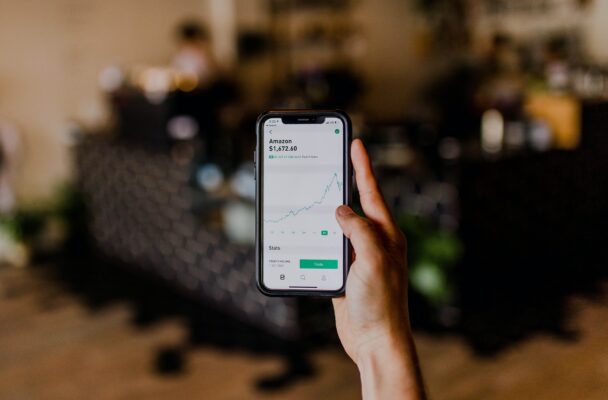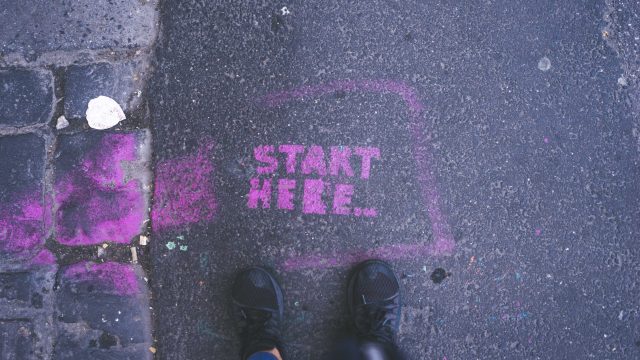Figuring out where you’re going to source your inventory is tricky for any business, but when it comes to Amazon FBA, you need to ensure you get it right. There are a multitude of different suppliers and retailers you could source products from, but which one is right for you?

In this article, we’re going to take a deep dive into Amazon FBA product sourcing – where you should source your products, a guide to some of the pitfalls new sellers tend to fall into and what to look for when choosing a product.
An introduction to Amazon FBA
FBA stands for “Fulfillment by Amazon”. It means what it says – your items are not fulfilled by you, they’re fulfilled by Amazon. This means that you acquire your inventory and you ship it to Amazon’s warehouse, where they store it until an order is placed. When your customer orders one of your items, Amazon pick, pack and ship the item to the customer.
FBA has a number of benefits, which include but are not limited to:
- Products are eligible for Amazon Prime, meaning potentially quicker delivery than if you fulfilled the item by yourself
- Amazon handles all the customer service and returns for you
- Amazon stores your inventory and ships it out – you are hands off in the fulfillment process
Roughly 73% of Amazon sellers take advantage of FBA, and there’s a very low bar to entry – all you need is an Amazon seller account and the ability to send products to Amazon’s facility.
Where to source products for Amazon FBA
If you’ve decided FBA is the right business model for you, then there are a number of places you can source products from. This list is going to be nearly endless, so we’ll just touch on some of the more common in this article.
Buying from overseas suppliers
Overseas suppliers, such as AliExpress, DHGate and Banggood can be a good way to build up an inventory of stock to sell on Amazon. All of these sites are based in China and will allow you to connect with thousands of suppliers, primarily in China but also in other parts of the world, to purchase items in bulk.
You can even get your items shipped directly to an FBA warehouse (although you must ensure the seller packages the items properly so Amazon doesn’t reject them.) These sites work by allowing you to speak directly with sales agents from individual suppliers or factories. Once you agree the terms of your purchase, you can pay either by bank transfer, PayPal or even via Escrow for larger orders.
One of the downsides of sourcing items via these websites is that if you can buy the item, so can everyone else – and if someone else is bigger than you and can order a higher quantity, they will get a better price and will likely be able to undercut you. You’ll have to work hard to identify profitable products.
One thing you must be very wary of is not to purchase any branded products from any of these Chinese sourcing websites. There are unscrupulous sellers that will happily sell you branded goods or goods that infringe on someone else’s copyright or intellectual property. This can come back to haunt you as you may get away with having the items shipped to you if customs don’t fully inspect the package, but as soon as Amazon finds out you’re selling fake goods you’ll get permanently banned.
Amazon has a very strict anti-counterfeiting policy, and if they discover you’ve been shipping fake products to them via FBA they’re likely to remove your listings, ban your account, destroy or dispose of any counterfeit inventory that you’ve shipped to them and withhold any of your funds they haven’t paid out to you yet. Don’t say we didn’t warn you.
Buying from US-based wholesalers
We’d consider this a much safer option, as you do not run the risk of receiving counterfeit goods. If you have a product in mind, it’s likely there’s an established wholesaler in the US who will be able to supply you with this product. The benefit of this is that when applying to sell in gated categories, an ongoing relationship with an established supplier is key, and if you’re sourcing your items for example via retail arbitrage, you may struggle to get access to gated categories as Amazon won’t accept an invoice or a receipt from a retail store.
SourceMogul actually has a wholesale CSV feature. This will allow you to upload wholesale lists to the platform, and will then scan hundreds of different wholesalers across the internet to find you the best price. You can even search by manufacturer SKU or ASIN, and it will also give you the expected lead time and the MOQ.
You should be careful, however, as many wholesalers won’t do business with you unless you’re ordering a large quantity of their products, so ensure you’ll be able to sell whatever you order or you’ll end up with unsold inventory.
Buying from retail stores
This is where SourceMogul comes into its own. SourceMogul is an online arbitrage platform that will pinpoint potentially profitable products available from online retailers that you can sell on Amazon. Not only will it identify these products for you, but it will also give you the product’s sales rank, so you know how fast the item might sell, and it will give you the option to add in taxes, fees and any other costs so you can very accurately work out your profit margin.
You can also do this in retail stores, but using SourceMogul and doing this online is far, far easier. We offer a 7 day free trial of SourceMogul so you can try sourcing products from retailers to sell on Amazon FBA, which you can check out at the link below.
Liquidation goods
*Note – don’t confuse this with the Amazon FBA liquidation program, which helps you get rid of unsold stock.
When a store goes out of business, their inventory is often placed up for sale to the highest bidder. You can buy pallets of liquidation goods for vastly under RRP and resell for a significant profit on Amazon if you know what you’re doing.
Often these are sold in auctions, so the price you pay will be dependent on who might be willing to outbid you. However, there’s definitely a thriving community of people online who are doing this, and it makes sense – if you are in the right place at the right time, you could grab a pallet of unsold, brand new inventory for up to 90% off the RRP.
Be aware though that we think this is the most labour-intensive and least scalable way of doing FBA. Additionally if your merchandise arrives broken, you will have no recourse in the same way as if you purchased your items from a retail store or from a wholesaler.
The most common mistakes people make when sourcing FBA products
Ignoring terms and conditions
This might seem obvious, but it’s very, very important. The reason is that Amazon has very strict terms and conditions and they’re not above terminating accounts if you violate them. This even applies if you’ve shipped your items to a fulfilment center – and if you get banned while your goods are in Amazon’s possession, you won’t be able to get them out.
Not optimising your listings
You need to customize all of your listings. It’s not enough to just use a generic description, or to use the manufacturer’s standard description, because everyone else will be doing this. Keyword optimization is very important on Amazon and it’s what’ll get you to the top of the searches. Make sure you’re also including detailed information such as the item’s colour, size, weight, material, etc.
Overstocking
This is a big mistake because a lot of people don’t realise how much it will cost. Amazon’s warehouse space is at a premium, and if your items don’t sell, you will have to pay storage fees to keep your items there, unless you decide to liquidate them (whereby Amazon will sell them to a designated liquidation partner and you’ll get back much less than the RRP.)
Stocking out
Perhaps even worse than overstocking is stocking out, where you may have underestimated demand for your items and you’ve got no inventory left. If you have orders that you can’t fulfill, it will severely damage your seller profile. You should be managing your inventory on Amazon as accurately as you possibly can to ensure this doesn’t happen.
How to decide which products to sell
Profitability
This goes without saying but you need to ensure you can make money on the item you want to buy. That means buying low and selling high. What are other people selling the item for on Amazon? What is the item selling for in other retail stores? Once you understand this you will need to work out your expected overheads – cost of shipping the item to Amazon, what Amazon will charge you in terms of seller fees and also for storing your products in their warehouse, what you might have to pay out in sales tax, etc. You need to work all of this out to see what your margin is, and then you have to decide whether that’s acceptable to you.
For example, you might be able to be in profit on an item to the tune of $5. Is that enough for you? If you’re selling 200 of them a day it might – but if you sell one a week, it’s not worth your time. This is where you have to use competition and sales rank to dictate whether you go ahead with the item – it’s not enough to just say that something is worth selling because it’s profitable.
Competition
Competition is something you need to consider before you buy any product – who are you competing with? Are they larger than you and therefore can afford to buy in more stock at a reduced price? Are there too many fish in the sea and the buyer has a huge amount of choice as regards to who to buy from, in which case they’ll buy from whoever has the buy box (which you’ll never get because you’re competing with so many other sellers?)
It’s going to be pretty impossible to find a product with zero competition, but ensure the competition that’s out there is reasonable before you commit to buying a product, as if your product is saturated, you’ll struggle.
Sales Rank
Many people overlook this but it’s probably the most important part. You’re never going to make a profit if an item doesn’t sell. Even if there’s a significant potential margin, and the competition is very low, your FBA business will be stuck if you stock products that sell very slowly or don’t sell at all. Make sure that the items you buy have at least some degree of popularity on Amazon, or be prepared for inventory to sit in Amazon’s warehouse gathering dust.
Why online arbitrage is the best way to get started on Amazon FBA
Online arbitrage is a great starting point to Amazon FBA, as it allows for a very quick route to market – there’s no reason why you couldn’t get started immediately using SourceMogul. Online arbitrage also has a very low barrier to entry – most sellers can get started with less than $500.
The best solution for doing online arbitrage with Amazon FBA is SourceMogul, as it takes out all of the manual work that goes into identifying potential profitable products. We’re offering a free 7 day trial for you to test SourceMogul out, which you can take advantage of at the link below.
More strategy
-

6 steps to becoming an Amazon seller. No experience needed.
Becoming a successful Amazon seller is easy - the Amazon brand and logo represents…
-

Top tips for success from a new Amazon seller
We've compiled a list of the top tips for new sellers, gathered from a…
-

How to get ungated on Amazon – your guide to Amazon restricted categories
If you’re looking to expand your online arbitrage business, you might find yourself tempted…
-

How to prepare for Amazon Q4 trading
Every year the holiday season seems to come around a little earlier. As an…




